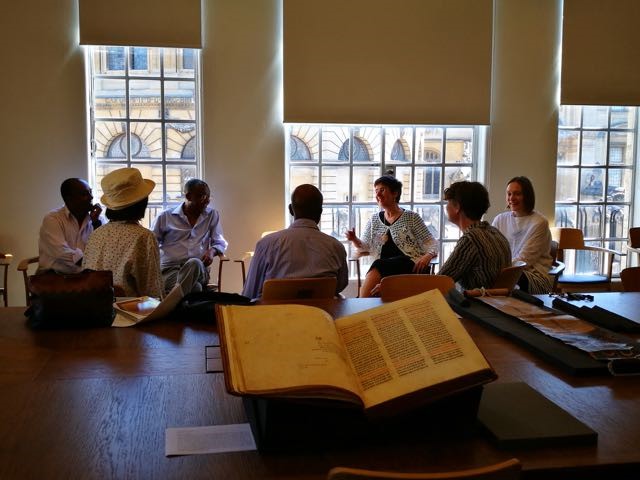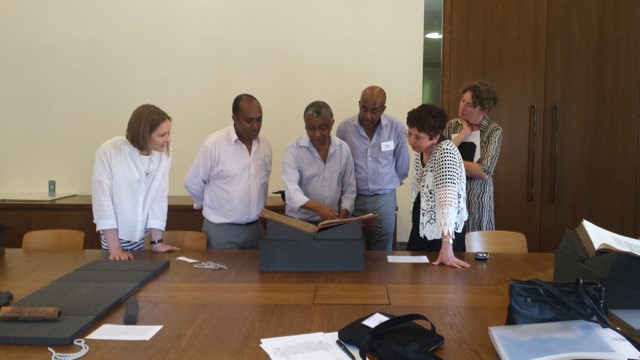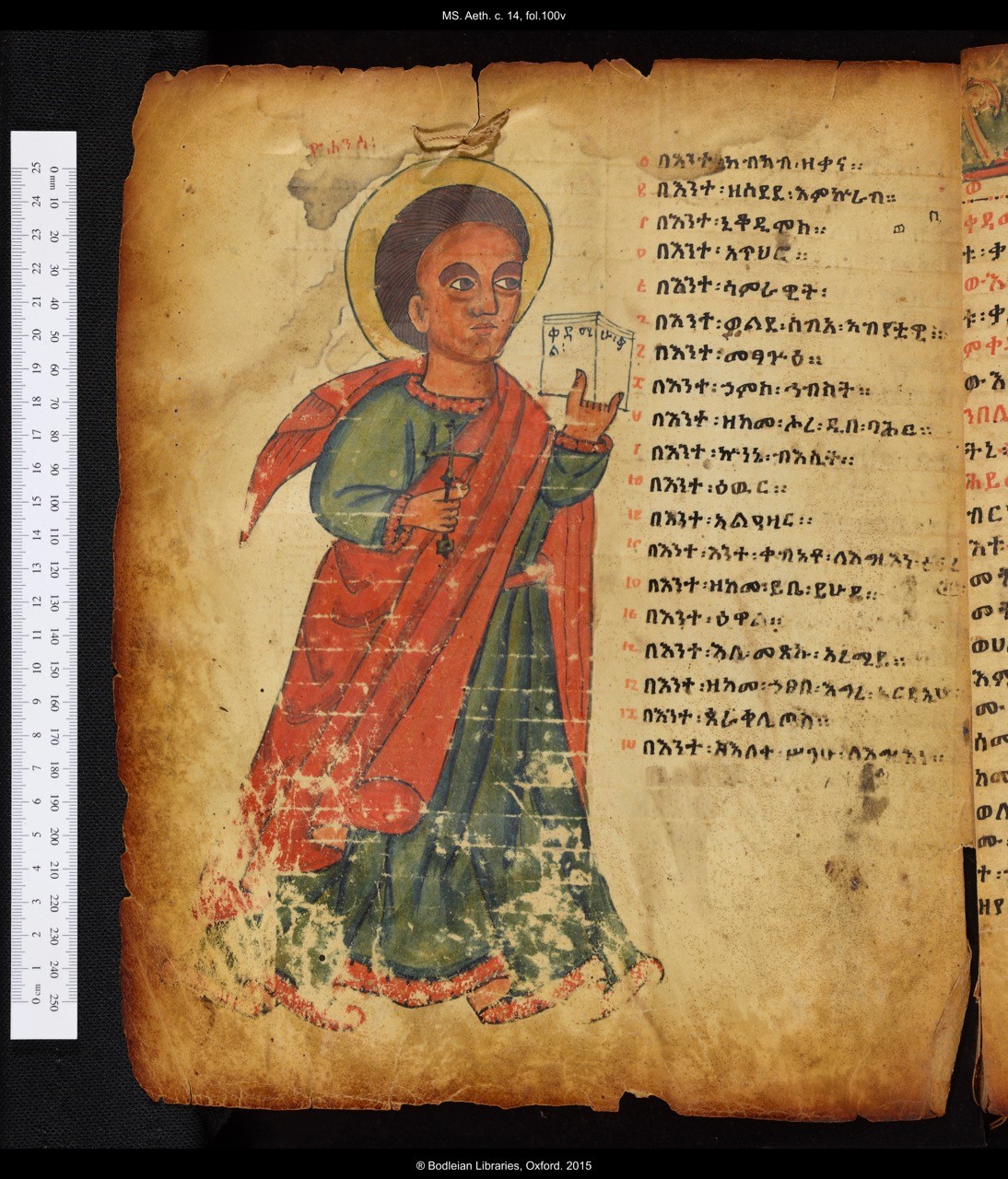Recent months have brought an unprecedented interest in Ge’ez manuscripts of Ethiopia and Eritrea – a development that we welcome at the Bodleian. Study of this material has reached a new level, with further palaeographical and codicological knowledge, as well as a growing appreciation of art history. Studying, displaying, and digitising a variety of our little-known codices and scrolls with modern means help us better understand and disseminate our findings to new audiences.
With this in mind, on Saturday, the 17th of June we welcomed a small group of Ethiopians and Eritreans at the Bodleian to view a selection of Ge’ez manuscripts of Ethiopia and Eritrea. The material, which was studied and discussed with great excitement, included a magic scroll with miniatures of angels and demons, an illuminated seventeenth-century prayer book, fragments of a medieval gospel with evangelists’ portraits, a hagiographic work with copious illustrations to the text, an important textual variant of the Book of Enoch and the epic work Kebra Nagast (Glory of the Kings).
The experience of the day was that of beautiful exchange of ideas, as well as building bridges within and between communities. We look forward to future developments!

Engaged in discussion from left to right: Dereje Debella, Judith McKenzie, Girma Getahun, Yemane Asfedai, Gillian Evison, Madeline Slaven and Rahel Fronda. Photo credit: Mai Musié.

Studying a magic scroll, from left to right: Yemane Asfedai, Girma Getahun, Dereje Debella, Madeline Slaven and Rahel Fronda. Photo credit: Gillian Evison.


